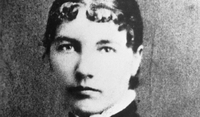Though the poisons of pollution and the encroachment of climate change are continuing environmental threats, it's the acceleration of biodiversity loss that most alarms Fraser (God's Perfect Child
) in this well-sourced study of worldwide attempts to knit together enough ecosystems to keep life alive. The problem: the disappearance of nature itself—the mass extinction of species, from lumbering polar bears to fragile flowers—that could see half of all nonhuman life extinct by the end of this century. The solution: rewilding—a nascent “resurrection ecology” that designs wildlife refuges (“cores”) and, more importantly, creates corridors connecting one refuge to another so that species such as elephants, tigers and wolves can range more wildly, a key to survival. Successful rewilding in North America, the Yellowstone to Yukon Conservation Initiative, has led to a rebound in mountain lion and bear populations; more unexpectedly, the demilitarized zone between South and North Korea, a narrow 155-mile-long corridor uninhabited by humans for 55 years, has seen an ecological rebirth and is now home to 67 endangered species. Though Fraser's fact-heavy prose is slow reading, her story of grassroots activism paired with the scientific is environmentally inspirational. (Dec.)


